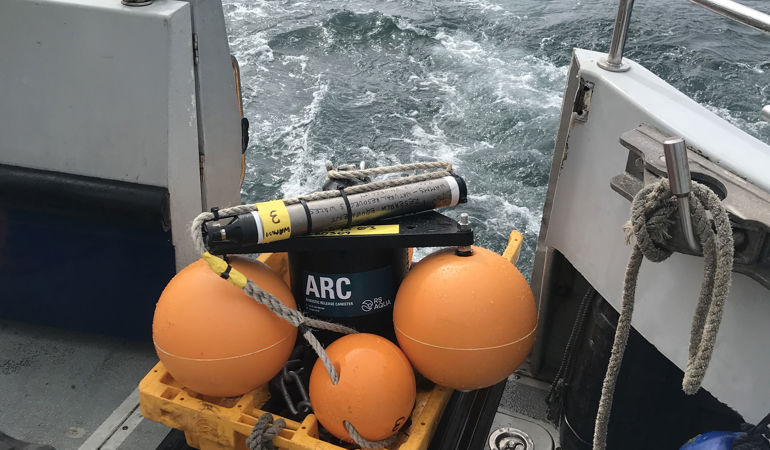Project to record impact of noise on marine mammals

Recording equipment has been deployed off the coast of Anglesey to monitor dolphins, porpoises and underwater noise.
Working in partnership, Natural Resources Wales (NRW), the Centre for Environment, Fisheries and Aquaculture Science and Bangor University have placed specialist recording equipment at three locations in the North Anglesey Special Area of Conservation to learn if human made and natural noise affects marine mammals.
As part of the Welsh Acoustic Marine Mammal Survey, recordings will be made between 30 and 60 metres underwater over an 18-month period to understand how mammals like harbour porpoise, bottlenose dolphin, Risso’s dolphin and common dolphin, use the area.
Natural noise includes strong tidal flows carrying sediment, weather conditions such as wind and rain on the surface of the sea, waves, and other marine life, while noise from human sources includes ships and boats, sonar, and the construction and operation of marine industries.
This project is funded through the Welsh Government’s Nature Networks Programme, to strengthen the resilience of Wales’s protected land and marine sites. This investment will help halt and reverse the loss and decline of habitats and species and put Wales on a solid footing on the path to nature’s recovery.
Alex Zalewski, NRW’s Marine Ecology Advisor for the project, said:
“Underwater noise can disturb marine mammals and mask their ability to use and hear sound to find food and communicate with each other.
“We want to improve our understanding of how background noise levels impact these mammals by using specialised acoustic recording equipment.
“Understanding ambient underwater noise levels will give us more information about the distribution of noise, its sources and identify effective management options to help build resilience in populations of marine mammals.
“The recording devices capture sound within certain frequencies allowing us to detect the clicks and whistles dolphins and porpoises make. We suspect the underwater soundscape will be naturally quite noisy from strong tidal flows and there is likely to be detectable noise from human sources too.
“At the end of the project we will have a better understanding of how to monitor underwater noise in locations that are naturally noisy, allowing us to study how best to acoustically monitor porpoises and dolphins in Wales.”
During the project the equipment will be recovered every three months and recordings analysed.
For more information visit Natural Resources Wales / Nature Networks - information on marine projects
